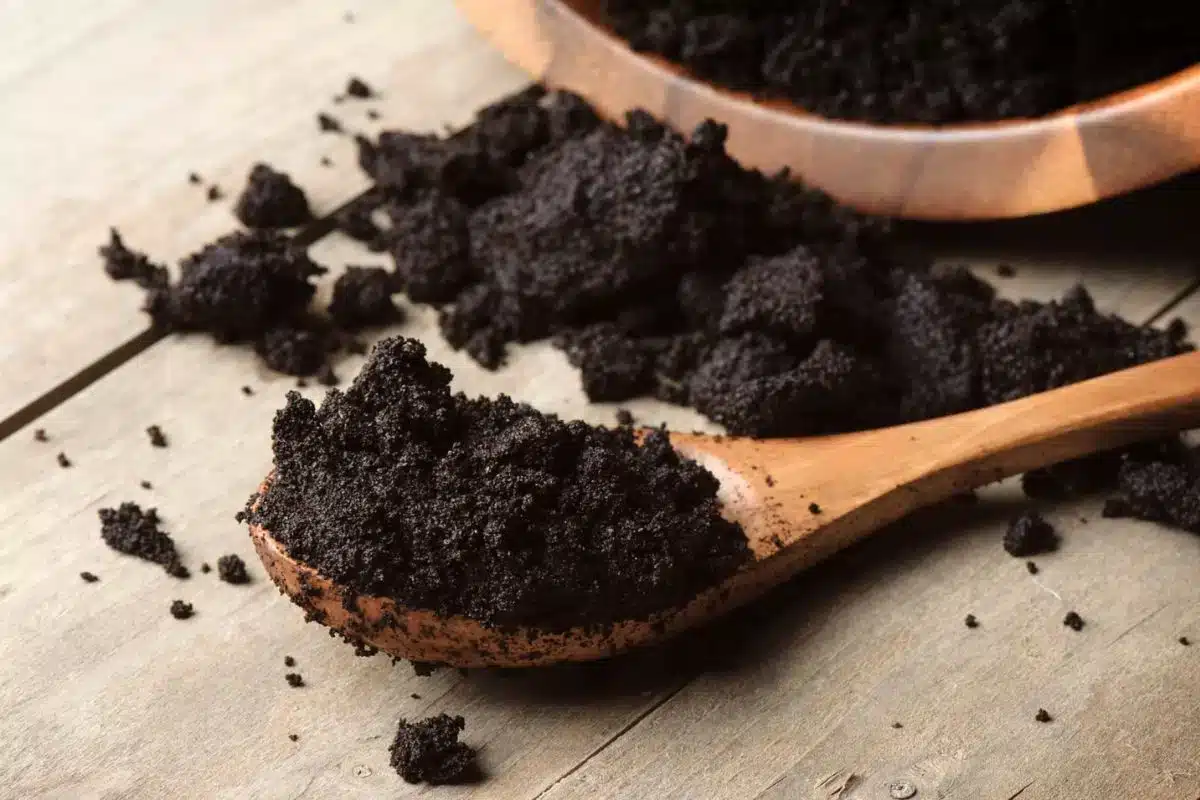In a groundbreaking discovery that transforms our morning waste into engineering gold, researchers at RMIT University in Australia have found that coffee grounds can strengthen concrete by up to 30%. This revolutionary finding not only offers a practical solution for the billions of kilograms of coffee waste produced annually but also addresses critical environmental and construction challenges. The innovation marks a significant advancement in sustainable building practices that could reshape our infrastructure while reducing waste.
Transforming everyday coffee waste into construction gold
Every morning, millions of people brew their favorite coffee, unaware that the leftover grounds could become a crucial component in strengthening the very buildings around them. Through an innovative process called pyrolysis, scientists have successfully converted ordinary coffee grounds into a powerful concrete additive.
Pyrolysis involves heating organic materials without oxygen, creating biochar from coffee waste. This transformed material, when mixed with traditional concrete ingredients, enhances structural integrity significantly. Tests reveal that concrete reinforced with coffee biochar exhibits up to 30% greater strength than conventional mixes.
The environmental benefits extend beyond waste reduction. Coffee grounds that would otherwise decompose in landfills and release methane—a potent greenhouse gas—are instead repurposed into valuable building materials. This circular approach simultaneously addresses waste management challenges while creating stronger infrastructure.
Many gardeners already know that banana trees benefit from coffee grounds as fertilizer, but this construction application takes coffee recycling to an entirely new level. The absorbent properties of coffee biochar make it particularly valuable for concrete production, improving both durability and performance.
The process offers multiple benefits :
- Reduction in landfill waste
- Decreased methane emissions
- Lower requirement for traditional concrete components
- Enhanced structural integrity of buildings
- Creation of more sustainable construction practices
Science behind coffee-enhanced concrete
The remarkable strength increase comes from coffee biochar’s unique properties. When coffee grounds undergo pyrolysis at specific temperatures, their cellular structure transforms into a highly porous material with exceptional absorption capabilities. This biochar then acts as a micro-reinforcement system within the concrete matrix.
Engineers have observed that the biochar particles distribute evenly throughout the mixture, creating microscopic reinforcement points that help prevent crack propagation. Additionally, the material’s ability to absorb and slowly release moisture improves the concrete curing process, resulting in a more complete hydration reaction.
The biochar’s carbon content also contributes to concrete’s durability. Unlike traditional concrete additives, coffee biochar has already neutralized environmental pollutants during its previous life cycle. Just as raspberries thrive with coffee grounds in garden settings, concrete gains strength from this organic material.
This innovation represents biomimicry at its finest—adapting natural solutions to engineering challenges. By studying how organic materials behave under various conditions, researchers have developed a technology that mimics nature’s efficiency while addressing modern construction needs.
The molecular interaction between coffee biochar and cement components creates a stronger bond at the microscopic level. This improved cohesion translates to enhanced structural performance under load-bearing conditions and better resistance to environmental stressors.
Environmental impact of coffee-reinforced building materials
The construction industry accounts for approximately 8% of global carbon emissions. Implementing coffee biochar technology could significantly reduce this environmental footprint while addressing the massive coffee waste problem. With around 10 billion kilograms of coffee grounds produced annually, the potential for large-scale implementation is substantial.
Traditional concrete production relies heavily on sand extraction, which causes severe ecological damage to river systems and coastal areas. By partially replacing these materials with coffee biochar, construction projects can reduce their dependence on destructive mining practices. Just as companion plants benefit kumquat trees, coffee grounds complement traditional concrete ingredients.
The carbon sequestration potential adds another environmental advantage. Coffee biochar effectively locks carbon into buildings for decades, preventing its release into the atmosphere. This passive carbon capture mechanism could play a crucial role in climate change mitigation strategies.
Urban planners interested in sustainability often consider how replacing grass with clover reduces maintenance requirements; similarly, coffee-enhanced concrete requires less maintenance while offering superior performance. The material’s resistance to weathering and environmental degradation means fewer repairs and replacements throughout a structure’s lifetime.
By integrating this technology into green building certifications, the construction industry could accelerate adoption while quantifying environmental benefits. Buildings constructed with coffee-enhanced concrete could potentially earn additional sustainability credits, driving market demand.
Future applications and remaining challenges
While laboratory results show tremendous promise, several hurdles must be overcome before widespread implementation. Regulatory standards for building materials vary globally, and comprehensive testing under diverse environmental conditions remains essential. Engineers must ensure that coffee-enhanced concrete maintains its structural integrity over decades, particularly in extreme climates.
Potential applications span the entire construction spectrum—from residential foundations to massive infrastructure projects. Sidewalks, highways, and commercial buildings could all benefit from stronger, more environmentally friendly concrete. Similar to how companion plants support grapevines in vineyards, coffee biochar supports concrete’s inherent properties.
Scaling production presents another challenge. Current biochar processing facilities would need significant expansion to meet potential demand from the construction industry. Investment in pyrolysis infrastructure would be necessary to transform coffee waste efficiently at scale.
Research continues into optimizing biochar processing for specific applications. Different concrete mixes might benefit from varied biochar characteristics, just as Brussels sprouts grow better with certain companion plants. The optimal ratio of coffee biochar to traditional materials may vary based on the intended use.
Despite these challenges, the economic benefits appear compelling. Reduced waste disposal costs, lower material expenses, and enhanced building performance create a strong business case. Additionally, buildings that require less maintenance and offer greater longevity represent significant long-term savings.
As with gardeners who wonder if tomatoes can grow with limited sunlight, engineers are exploring the minimum requirements for effective coffee biochar implementation. This pioneering approach to sustainable construction demonstrates how everyday waste can transform our built environment while addressing urgent environmental concerns.

